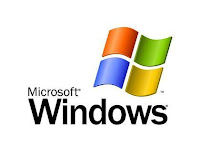In case you need it here is the Microsoft article for reverting a Win-7 Upgrade to the previous installation, now we know why we have the Windows.old folder ...
http://support.microsoft.com/kb/971760/
Steps to restore a computer to a previous Windows installation after you install a version of Windows 7
You may find it easier to follow the steps if you print this article first.
Step 1: Determine whether there is a Windows.old folder and whether there is sufficient free space on the Windows hard disk
- Click Start
Collapse this imageExpand this image

- On the View menu, click Details.
- In the Free Space column, note how much space is available for Local Disk (C:) under the Hard Disk Drives area.
- In the Hard Disk Drives area, double-click Local Disk (C:), and then determine whether the Windows.old folder exists.
Important If the Windows.old folder does not exist, you cannot follow the steps in this article to restore the previous Windows installation to this computer. You must backup and restore or transfer your files to the previous operating system.
- Right-click the Windows.old folder.
- Windows 7 will determine the size of the folder after several seconds.
Determine whether the Windows.old folder is smaller than the free space that is available for
Local Disk (C:) in step 1.2.
Note If the Windows.old folder is two times as large as the free space that is available for the
Local Disk (C:) entry, you may be unable to restore the previous Windows installation.
Step 2: Start the Windows Recovery Environment
- Put the Windows 7 installation disc in the DVD drive, and then restart the computer.
- Press a key when you are prompted to restart from the disc.
- In the Install Windows window, select a language, a time, a currency, a keyboard input method or other input method, and then click Next.
- In the Install Windows window, click Repair your computer.
- In the System Recovery Options window, click the version of the Windows 7 operating system that you want to repair, and then click Next.
- In the System Recovery Options window, click Command Prompt.
The Command Prompt window opens, and it displays the command prompt. The command prompt is where you will type the commands that are described in the following steps.
Step 3: Move the Windows 7 folders to a new Win7 folder
Note When you type one or more of the commands at the command prompt in the following steps and press ENTER, you may receive the following message:
The system cannot find the file specified.
If you receive this message, go to the next step in this section, and then type the command in that next step.
Type the following commands and press ENTER after each command:
C:
Md Win7
Move Windows Win7\Windows
Move "Program Files" "Win7\Program Files"
Move Users Win7\Users
Attrib –h –s –r ProgramData
Move ProgramData Win7\ProgramData
Rd "Documents and Settings"
Step 4: Copy the contents or move the contents of the Windows.old folder
Note When you type one or more of the commands at the command prompt in the following steps and press ENTER, you may receive the following message:
The system cannot find the file specified.
If you receive this message, go to the next step in this section, and then type the command in the next step.
Type the following commands and press ENTER after each command:
move /y c:\Windows.old\Windows c:\
move /y "c:\Windows.old\Program Files" c:\
move /y c:\Windows.old\ProgramData c:\
move /y c:\Windows.old\Users c:\
move /y "c:\Windows.old\Documents and Settings" c:\
Step 5: Restore the boot sector for the previous Windows installation
Type one of the following commands at the command prompt, as appropriate for your situation.
Note In the following commands,
D: represents the DVD drive. If the DVD drive on the computer is represented by a different letter, such as
E:, use that letter in the command.
Step 6: Restore the Boot.ini file for the previous Windows installation of Windows XP or of Windows 2000
Note Follow these steps only when the previous installation is Windows XP or Windows 2000.
Type the following commands and press ENTER after each command:
Attrib –h –s –r boot.ini.saved
Copy boot.ini.saved boot.ini
Step 7: Close the Command Prompt window, and then click Restart
- Type the following command at the command prompt, and then press ENTER:
exit
- Click Restart to restart your computer.
Note After you have verified that Windows XP is functional, you can remove the C:\Win7 folder if it is not needed for data recovery




















